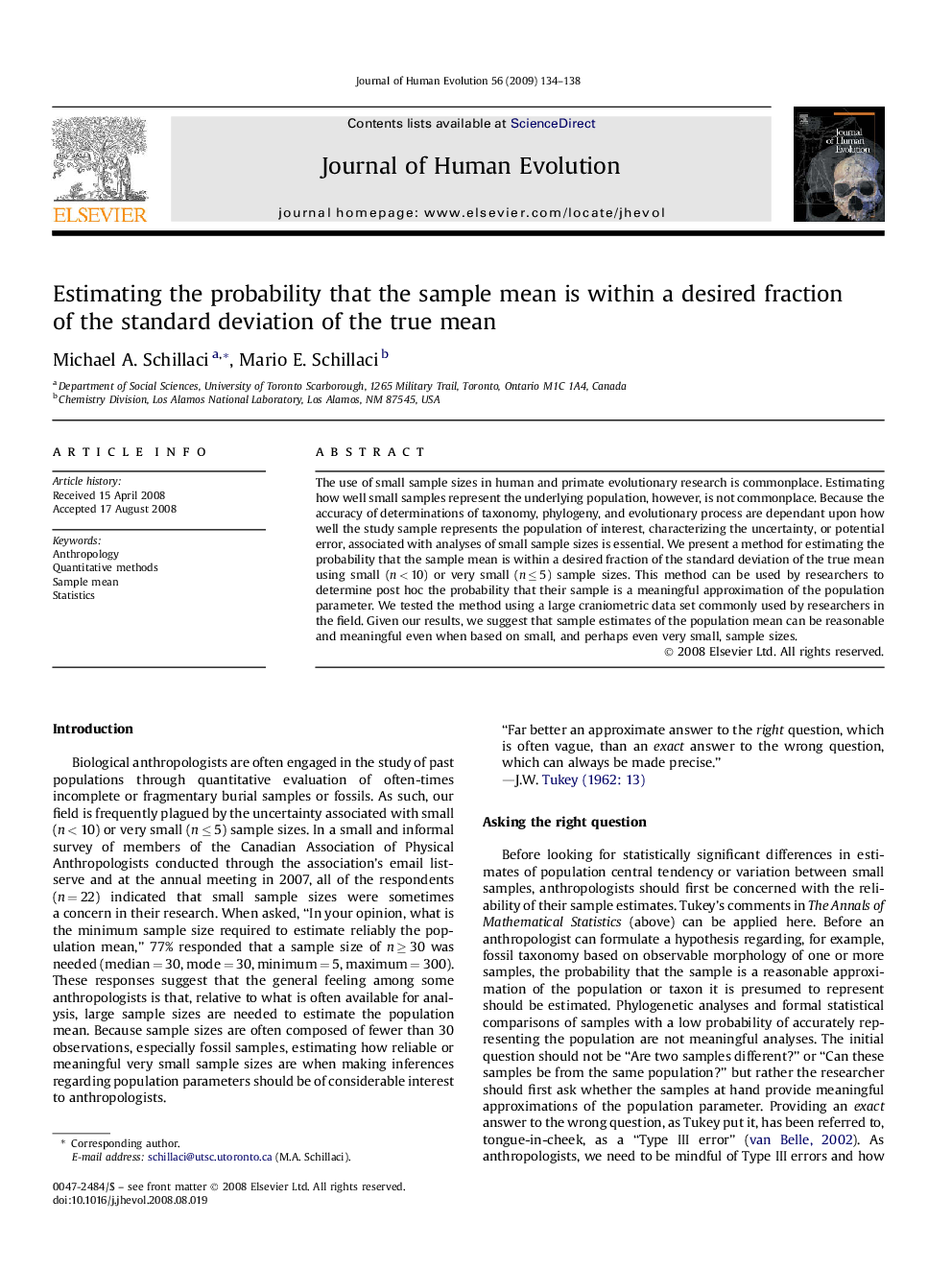| Article ID | Journal | Published Year | Pages | File Type |
|---|---|---|---|---|
| 4557220 | Journal of Human Evolution | 2009 | 5 Pages |
The use of small sample sizes in human and primate evolutionary research is commonplace. Estimating how well small samples represent the underlying population, however, is not commonplace. Because the accuracy of determinations of taxonomy, phylogeny, and evolutionary process are dependant upon how well the study sample represents the population of interest, characterizing the uncertainty, or potential error, associated with analyses of small sample sizes is essential. We present a method for estimating the probability that the sample mean is within a desired fraction of the standard deviation of the true mean using small (n < 10) or very small (n ≤ 5) sample sizes. This method can be used by researchers to determine post hoc the probability that their sample is a meaningful approximation of the population parameter. We tested the method using a large craniometric data set commonly used by researchers in the field. Given our results, we suggest that sample estimates of the population mean can be reasonable and meaningful even when based on small, and perhaps even very small, sample sizes.
